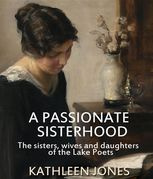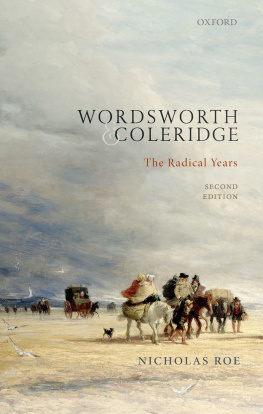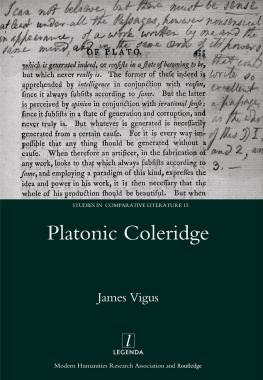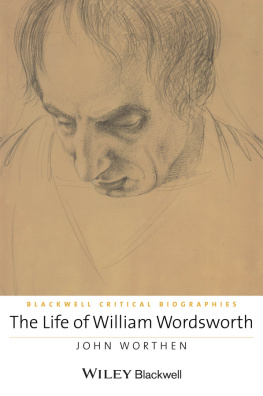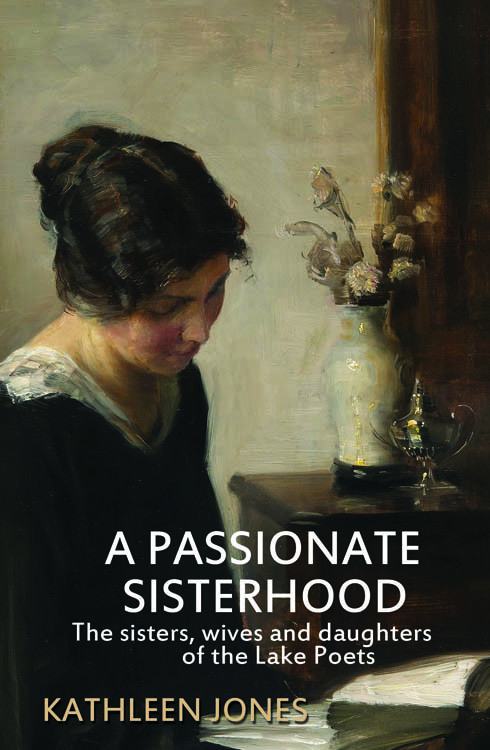
A PASSIONATE SISTERHOOD
The Sisters, Wives and Daughters of the Lake Poets
KATHLEEN JONES
............
A Book Mill Publication
Copyright Kathleen Jones 2017
Copyright Kathleen Jones 1997
This ebook is licensed for your personal enjoyment only. This ebook may not be re-sold or given away to other people. If you would like to share this book with another person, please purchase an additional copy for each recipient. If your are reading this book and did not purchase it, or it was not purchased for your use only, then please return to Smashwords.com and purchase your own copy. Thank you for respecting the hard work of this author.
The moral right of the author has been asserted. All rights reserved. No part of this publication may be reproduced, stored in a retrieval system, or transmitted in any form or by any means, without the prior permission in writing of the publisher, nor be otherwise circulated in any form of binding or cover other than that in which it is published and without a similar condition including this condition being imposed on the subsequent purchaser.
A CIP catalogue record for this book is available from the British Library
First published in Great Britain by Constable and Company Ltd, 1997
978-0-9574332-2-9
.
The Book Mill is an imprint of Ferber Jones Ltd
.
About The Author
Kathleen Jones was born and brought up on a hill farm in the Lake District. After spending some years in Africa and the Middle East, where she worked in English broadcasting, she returned to Cumbria where she now lives with sculptor Neil Ferber. She has four children and writes full-time, working occasionally as a creative writing tutor. Her published work includes seven biographies, A Glorious Fame: The Life of Margaret Cavendish, Duchess of Newcastle (Bloomsbury 1988); Learning not to be First: The Life of Christina Rossetti (Oxford University Press 1991); A Passionate Sisterhood (Constable 1997); Catherine Cookson: The Biography (1999);Margaret Forster: An Introduction (Northern Lights 2003); Seeking Catherine Cookson's Da (Constable 2004); and Katherine Mansfield: The Story-teller (Penguin NZ 2010); short fiction (for which she has received a number of awards), journalism and two collections of poetry Unwritten Lives, (Redbeck Press 1995) and Not Saying Goodbye at Gate 21 (Templar Poetry 2011).
.
Quotes from Reviewers
"It is the stuff your English teacher never told you... told with such enthralling vividness." VAL HENNESSY, Daily Mail
"I .. quickly became captivated. I think Kathleen Jones has done a great job.. And she has a good deal of passion herself, tho' strictly controlled... her use of quotes from the women's letters etc was what I admired most. I know to my cost how hard it is to do. Her choices were always judicious - and best of all, automatically urge the reader back to the source from which they came - the aim, I always think , of all biography... what a wonderful story it is." MARGARET FORSTER
" .. reading it becomes a gripping, almost addictive experience" ANGELA LEIGHTON, Times Literary Supplement
"Jones' group biography is a model of organisation and insight .. a lucid, calm and thoughtful account of how physical landscape shapes psychic and cultural space" Read More KATHRYN HUGHES Literary Review
"This is a fascinating, marvellous, utterly absorbing book" SUE LIMB ,Independent on Sunday
.
Acknowledgements
The author acknowledges with gratitude the financial assistance of the Society of Authors and the Authors' Foundation in order to complete her research. Many individuals and organisations have given invaluable assistance to the author, supplied illustrations and granted permission to quote from manuscripts and books. Particular thanks must go to the staff of Penrith Library, Jeff Cowton and the staff of the Wordsworth Trust Library at Dove Cottage, the Dove Cottage Trustees, Mr and Mrs Peter Elkington and the Trustees of Rydal Mount, the Governors of Keswick School, Mrs A.H.B. Coleridge, Mrs Priscilla Coleridge Cassam, the research librarian of the Harry Ransom Humanities Research Centre at the University of Texas at Austin, the staff of Coleridge Cottage, Richard Holmes, Molly Lefebure, Neil Ferber, Tony Riley, Richard Gollner and Carol O'Brien.
Every effort has been made by the author to contact the copyright holders of manuscripts and other published material, but in some cases no replies were ever received to communications sent. The author therefore apologises to anyone whose name has been omitted due to inadequate or out-of-date information. The source material has been fully acknowledged in every case.
.
PREFACE
On the Other Side of the Glass
.
Winter rain looked at
through the windows of great men
is still only rain.1
.
To an eighteenth-century sensibility, the Lake District was not necessarily a desirable place to live in. Its wild, mountainous prospects and great beauty excited the romantic imagination. But the privations of life in so remote and barbaric a region - its rocks and 'torrents roaring' - could also induce a shudder of horror and offered little to the sophisticated tourist who required both bodily comfort and elegant diversion. It was these extremes that drew Wordsworth, Coleridge and Southey north; their friend Charles Lamb preferred to remain in the civilised surroundings of a London street.
The Wordsworths lived at Grasmere, the Coleridges and Southeys 12 miles away at Keswick. The two households, linked initially by the friendship of the poets, remained close even after relations between the men deteriorated - bound together by the extraordinary tenacity of their wives and sisters. These six women, two groups of sisters, connected by blood and marriage, formed a series of passionate, triangular relationships. The three Fricker sisters, Sarah Coleridge, Edith Southey and Mary Lovell at Greta Hall, near Keswick, Dorothy Wordsworth and her childhood friends Mary (who married William) and Sara Hutchinson at Dove Cottage in Grasmere created a kind of extended family that kept the Lake Poets together long after they had ceased to be friends.
Inevitably their daughters - Dora Wordsworth, Sara Coleridge and Edith May Southey - thrown so much upon each others' company, formed close friendships and perpetuated the links.
The modern reader will be astonished by the distances they travelled, often on foot. Coleridge and the Wordsworths thought nothing of walking the 12 or 13 miles between Grasmere and Keswick to visit each other, sometimes in the dark. The roads were rough and often unmetailed. They were shod either in clogs -wooden soles with a leather shoe upper for rough walking - or stout shoes with a double leather sole. The cobbler's bill was one of their biggest expenses.
Sarah Coleridge and her sisters were city girls. Unlike Dorothy and Mary Wordsworth, they had little relish for vigorous exercise and the outdoor hazards of wind, rain and mud. Both Sarah and her sister Mary Lovell became very stout in middle age and found it an effort to walk even short distances. Visits to Grasmere were made either in a borrowed carriage or a 'returned chaise'.
Sara Hutchinson, too, had little fondness for long walks. A stroll along the garden terraces or the margins of the lake should, she felt, be enough exercise for anyone. Longer journeys were undertaken by coach or on horseback - sometimes on a 'double horse', a sturdy mount with a double saddle for riders in tandem. Only the rich had their own carriages. For long journeys the better off hired a chaise with post horses and post boys. Others bought a seat on a mail coach, travelling in cramped conditions and much discomfort. Cheaper seats were to be had outside on the roof exposed to the elements. For the poor there were slow rides in a carrier's cart sometimes pulled by oxen.
Next page
